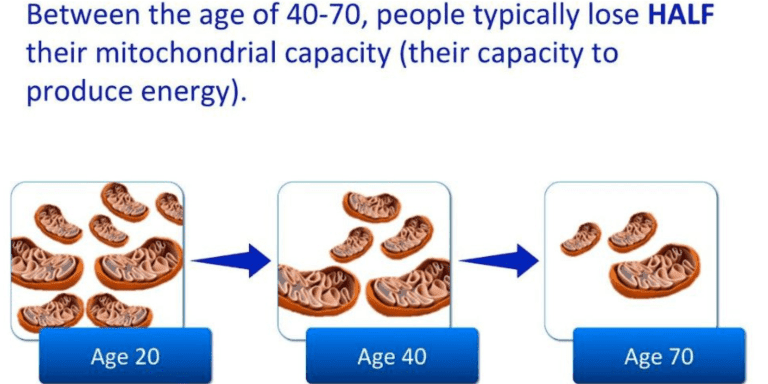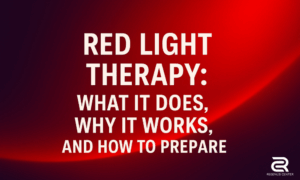Photo Credit. The Energy Blueprint.
When you come to a Regenus Center and you hear about “increasing your energy,” given years of delusional information about energy enhancement available on the market; we understand why you might not get it. At first, you may think it’s just another wishful thinking company selling fairy dust. After all, you’ve heard that before, you’ve been drinking coffee for years, exercising and trying to get a good night sleep and you’re still all out tired beyond belief every day.
Ok. That said, what you are about to read will in fact help you increase your energy and in a real way; a way you are almost assuredly not aware of, but down deep you will soon know makes sense.
You see, increasing your energy is not about stimulating your existing energy reserves so that you feel more energetic.
That’s what energy drink providers, sugar providers, caffeinated beverage providers, and others have been selling you for decades as they attempt to help you beat fatigue; yet none of these so-called solutions will increase your energy and fatigue you masqued, will come back with a vengence. They will energize you through stimulation, but they will not increase your actual energy stores; they will deplete them.
They’ve been skipping a step—the regeneration—which is the real way to energize your body, before you call upon your body to spend more of it’s energy through stimulation of any kind. From coffee and caffiene to exercise and work, it’s all stimulation; some forms with a better return on the investment of energy than others. ;-).
Of course, that starts with sleep. Without sleep, and recuperative activities, much of what I’m going to outline in the rest of this article will fall short of expectation. This is the bedrock. Once firmly in place, to regenerate your energy, you’ve got to engage in what’s called cellular regeneration and build what The Energy Blueprint founder, Ari Whitten calls, the cellular engine.
So what is “regeneration?”
Regeneration in humans has been traditionally seen as the regrowth of lost tissues or organs in response to injury.
This is in contrast to wound healing, which involves closing up the injury site with a scar. Some tissues such as skin and large organs including the liver regrow quite readily, while others have been thought to have little or no capacity for regeneration. However ongoing research, particularly in the heart and lungs, suggests that there is hope for a variety of tissues and organs to eventually become regeneration-capable.
There is though a much more practical understanding of regeneration that goes beyond your science class investigating the regrowth of a starfishes leg, or the foam roller or myofascial release definition you will learn about at your local gym, or training facility, which is helpful but does not get to the heart of regeneration. There is way more to the art of regeneration.
The Cellular regeneration as we are talking about it is when you recharge, repair and reactivate the cell primarily through:
1: Light:
Most of us are familiar with the term photosynthesis when it applies to plants. Photosynthesis is the process by which green plants and certain other organisms use the energy of light to convert carbon dioxide and water into the simple sugar glucose. … Most plants produce more glucose than they use, however, and they store it in the form of starch and other carbohydrates in roots, stems, and leaves.
Light makes that reaction possible in plants, but it also does so in humans, only a different cast of characters is in play. You can understand this better here. Photosynthesis for the human body is called Photobiomodulation, which stands for Photo (light), Bio (body) and Modulation (change)– changing the body with light.
Just as the light starts the whole process of energy production in plants it starts the energy production in humans and this is essential to cellular regeneration.
2: Autophagy.
Autophagy (or autophagocytosis) (from the Ancient Greek αὐτόφαγος autóphagos, meaning “self-devouring” and κύτος kýtos, meaning “hollow”) described as the natural, regulated mechanism of the cell that disassembles unnecessary or dysfunctional components. It allows the orderly degradation and recycling of cellular components.
In optimal autophagy, you want to provide the right environment (including light) for your body to maintain optimal cellular function, and that means you’ve got to replace old worn out cell parts for new ones, including new cells that are essential in the regeneration of new tissue.
Mr. Whitten explains that, for starters, there are 3 ways to amplify autophagy and boost your cellular rejuvenation.
1. Amplify circadian rhythm with light, movement, and nutrients.
2. Increase your fasting window each night
3. Water at the right time
When you improve cellular regeneration, you repair, build, replicate and maintain healthier cells and therefore a healthier body.
What is the Building the cellular engine?
This is about making your healthy cells stronger. And what’s responsible for that? Mitochondria. These are the cells energy generators. According to Mr. Whitten, you have about 750 to 1500 of mitochondria per cells. Multiply that number by the trillions of cells that make up our body and you have a lot of mitochondria.
What he says, and we agree wholeheartedly, is that at the core of building the cellular engine, is building bigger, healthier and stronger mitochondria.
How do you do that?
Hormesis — Hormesis is any process in a cell or organism that exhibits a biphasic response to exposure to increasing amounts of a substance or condition. Within the hormetic zone, there is a generally favorable biological response to low exposures to toxins and other stressors.
One of the breakthroughs of The Energy Blueprint by Ari Whitten is the illumination of hormesis as the central role in building the cellular engine and in particular building bigger, healthier and strong mitochondria. He states that between ages 20 and 70 we lose roughly half our mitochondria and therefore half our capacity to produce energy. This happens ultimately through mitochondrial dysfunction.
Half! That’s a big deal. No wonder so many people succumb to advanced aging, prematurely, in how they look, feel and perform with aches, pains and depleted energy with which to engage life.
You may not have Chronic Fatigue Syndrome, but you may feel tired all the time. That’s basically caused by some excess stress baring down on the organism, ultimately affecting and creating dysfunctional mitochondria, which also double as cellular defenders (see Cellular Defense Response). During periods of excess stress they slow or stop the production of energy.
In constant tiredness (vs Chronic Fatigue) your fatigue is just less extreme.
So to change that condition in your body, you not only need to increase cellular regeneration, you need to build the cellular engine.
Hormesis is best understood by our everyday use of exercise to build muscle. That’s hormesis in play. You put a little extra weight on the bar than you are used to and the muscle grows to meet the demand. Put too much and you risk injury, put too little and you don’t adapt and get stronger or bigger. The hormetic zone is where your body adapts.
And the same is true for your cellular engine, your mitochondria. But what’s the stress (s) that makes them bigger, healthier and stronger to restore your capacity to produce energy?
Well first it’s light, then heat, then cold among a number of other forms of hormesis and xenohormesis that Ari Whitten assembled in The Energy Blueprint Program.
For your information: Xenohormesis is a biological principle that explains how environmentally stressed plants produce bioactive compounds that can confer stress resistance and survival benefits to animals that consume them, including humans. You can learn more about his at NutrientRich.com, where you will learn about eating plant rich, high micronutrient dense diet that will give your body it’s superpowers.
So all of this begs the question: what builds cellular energy the first place so cellular regeneration can take place as well as building the cellular engine?
On one front you want to remove all non-essentials stresses from overexertion to toxins so that your body can regenerate effectively in an environment that is conducive to healthy, cellular regeneration. At the same time in a progressive fashion, you want to increase the strength of the cell and all of its cell parts; namely the cell’s mitochondria.
But It all requires energy. Even mitochondria, which are credited as cellular energy generators, need to have the energy to produce more energy and that starts way back in what’s called proton motive force. It’s what happens pre the production of ATP.
Proton motive force (pmf) generated during photosynthesis, or photobiomodulation in humans, is the essential driving force for ATP production. It is the central regulator of light capture and electron transfer, that increases the mitochondrial membrane potential and therefore, the voltage to produce more ATP.
It is both the electrical energy generated by the proton motive force and the stored ATP that enables your mitochondria to produce more ATP for chemical and mechanical energy that is essential to building stronger healthier and bigger mitochondria.
So to get that effect, we must make sure our body is not overexerted, gets the photons from light to produce energy, and biological / life stresses in the hormetic zone (not overexerted or burned with excess stresses) to have both the energy to adapt and get bigger, healthier and stronger mitochondria and cells…
That’s at the core of what we do to help you at Regenus Center!





